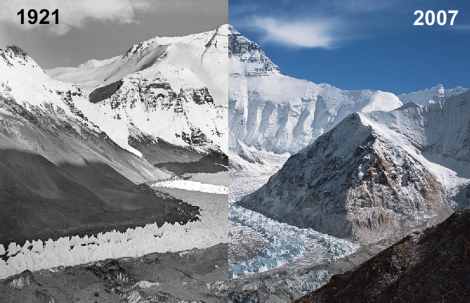Maybe you’ve thought that you’d like to see the Himalayas before you die, but you should consider whether you want to see them before they do. Global warming is putting a deadline on your bucket list. Travel is hard and expensive, though — so it’s good that the GlacierWorks project, headed up by photographer/filmmaker/mountain climber David Breashears, lets you see the glaciers of Everest and nearby mountains in stunning detail, without even getting up from the computer.
Click the photo above to get to the big version on the GlacierWorks site, and then zoom way, way in — even if you’ve seen multi-gigapixel photos, you may be shocked at how much detail you can see. (I’m stunned basically every time I see one of these.) If you scan around a bit you should be able to see climbers and camps from a staggering distance. And you can also see patches of bare snowless ground, which Breashears says are expanding.
Breashears, who has climbed Everest five times, is using GlacierWorks to document how climate change is affecting the world’s tallest mountain and its neighbors. In addition to the gigapixel photos, he also has slider comparisons to show how his photos compare to pictures of the same mountains from earlier years. Some of them look about the same, but in others, the snow melt is obvious.
Anyway, we definitely recommend spending some time zooming in on these photos and tooling around. It’s probably the closest you’ll get to the Himalayas, and definitely the closest you’ll get before they melt away even more.





